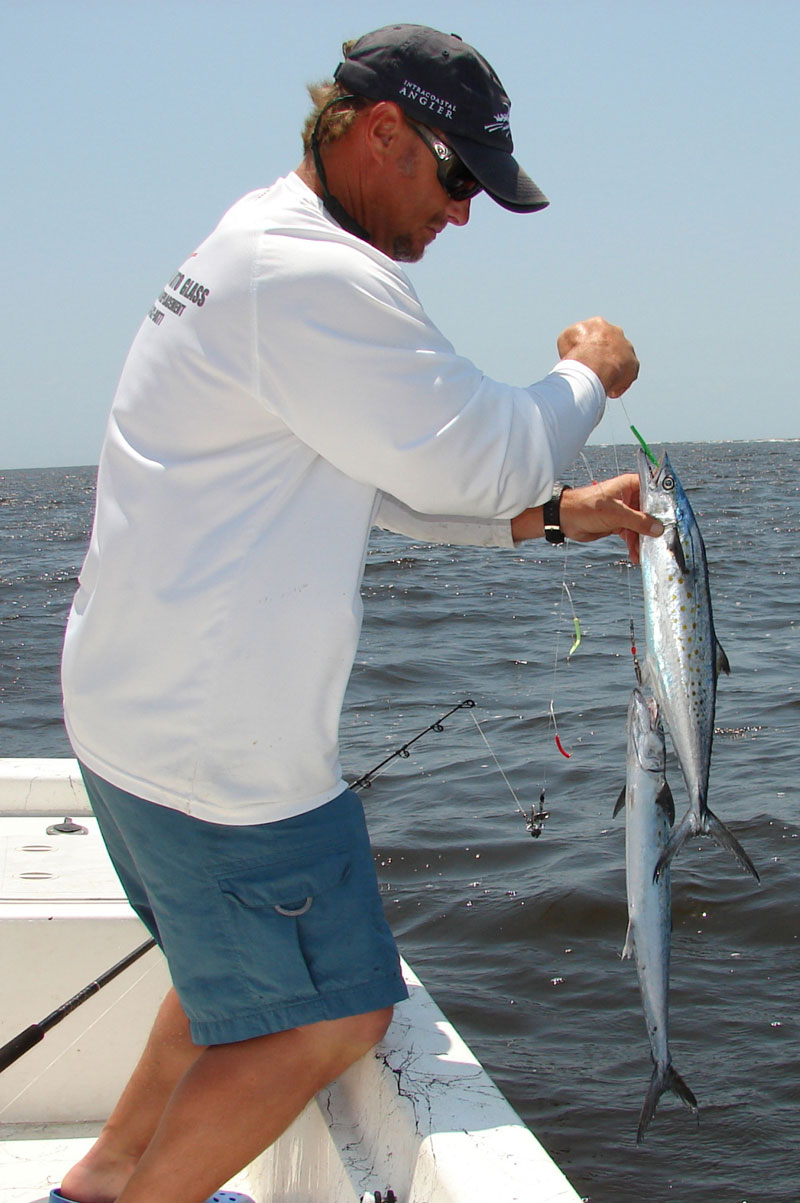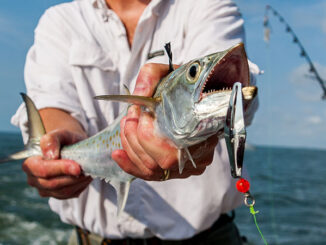
Spanish mackerel are here and hungry
Spanish mackerel usually begin arriving along the North Carolina’s southern beaches in April. And by Mother’s Day, they are around in good numbers. These tasty, junior-size members of the mackerel family bite well and make excellent table fare. They are favorites of many fishermen, who catch them from boats and piers and occasionally in the surf. This adds even more to their popularity.
Prime locations are around the tide lines just outside Masonboro, Carolina Beach, Cape Fear, Lockwood Folly and Shallotte inlets. The many nearshore artificial reefs and rocks, and along the edges of Frying Pan Shoals are also great spots. Schools may also be found in open water as they chase and devour a school of bait.
Rennie Clark of Tournament Trail Charters in Carolina Beach said many of his clients prefer to troll for Spanish. But a growing number like to find a school and cast to it, being able to fight fish without a planer or trolling sinker controlling the action.
Clark (910-465-8943) said his trolling spread for Spanish is primarily Nos. 00 and 0 Clarkspoons and mackerel tree rigs pulled behind 2-ounce trolling sinkers or No. 1 planers. The trolling speed is typically between 5 and 8 knots, but don’t worry about trolling too fast. Spanish have blazing sprint speed and can easily catch these lures if they want.
“On days off, my family and I enjoy casting to feeding Spanish more than trolling,” Clark said. “They like to fight the fish on lighter outfits rather than using heavy outfits to wind in planers and trolling sinkers. My favorite jigs are Gomame and Gomoku jigs from Williamson.
“These jigs come with treble hooks, and I replace them with No. 1/0 VMC ILSCB large ring J-hooks in the coastal black color, and I also switch out the standard split rings with stronger VMC No. 3, stainless-steel split rings,” he said. “This combination works well for Spanish and is up to the task of handling Atlantic bonito, false albacore and big red drum when they show in the fall. If these aren’t working, I downsize to smaller Maria jigs, and the bite usually picks up.”
Pier fishermen also catch Spanish in May. Small, flashy lures like Got-Chas, Shad, Minnow and Stick Jigs catch smaller ones well, and live baits catch larger Spanish. One not-so-secret tip is that Got-Chas with gold hooks catch fish much better than the ones with silver hooks. It’s wise to pay the extra money and catch more fish.





Be the first to comment